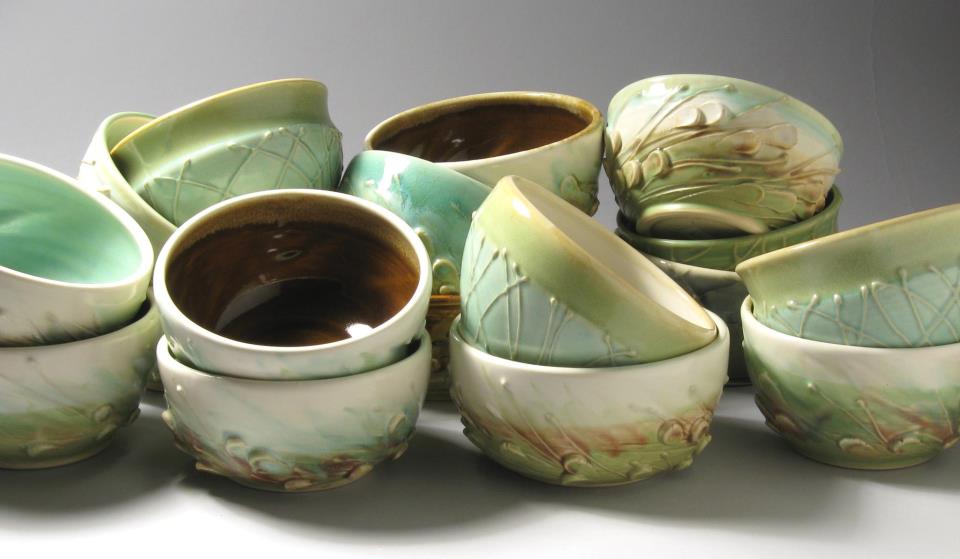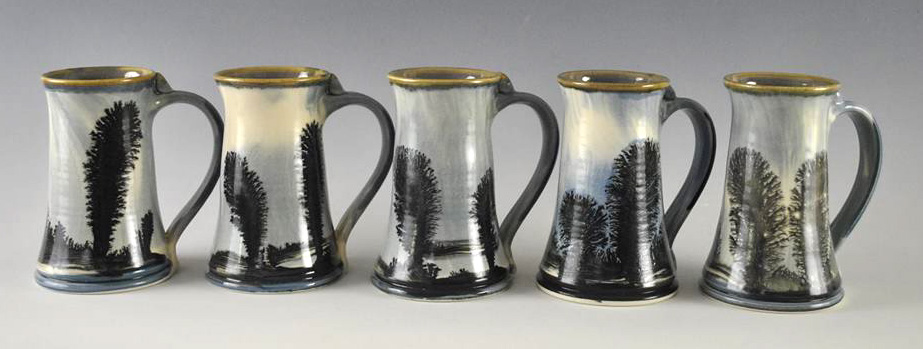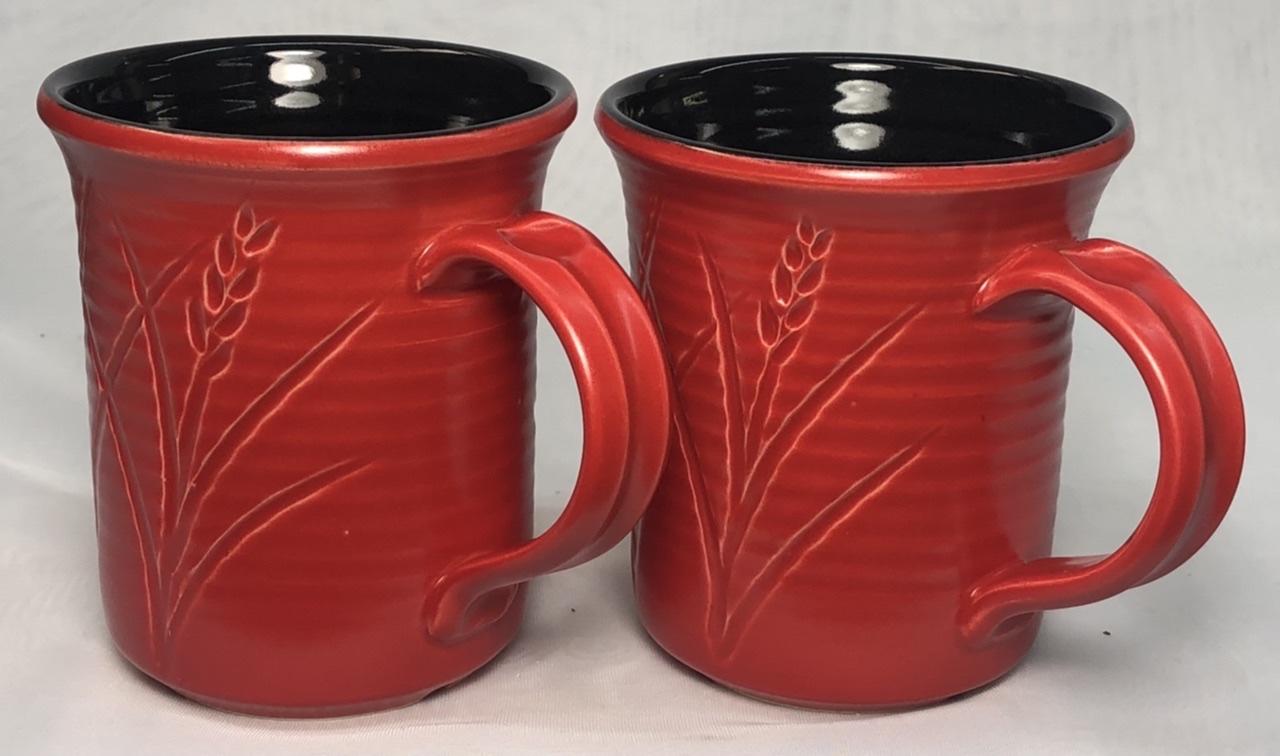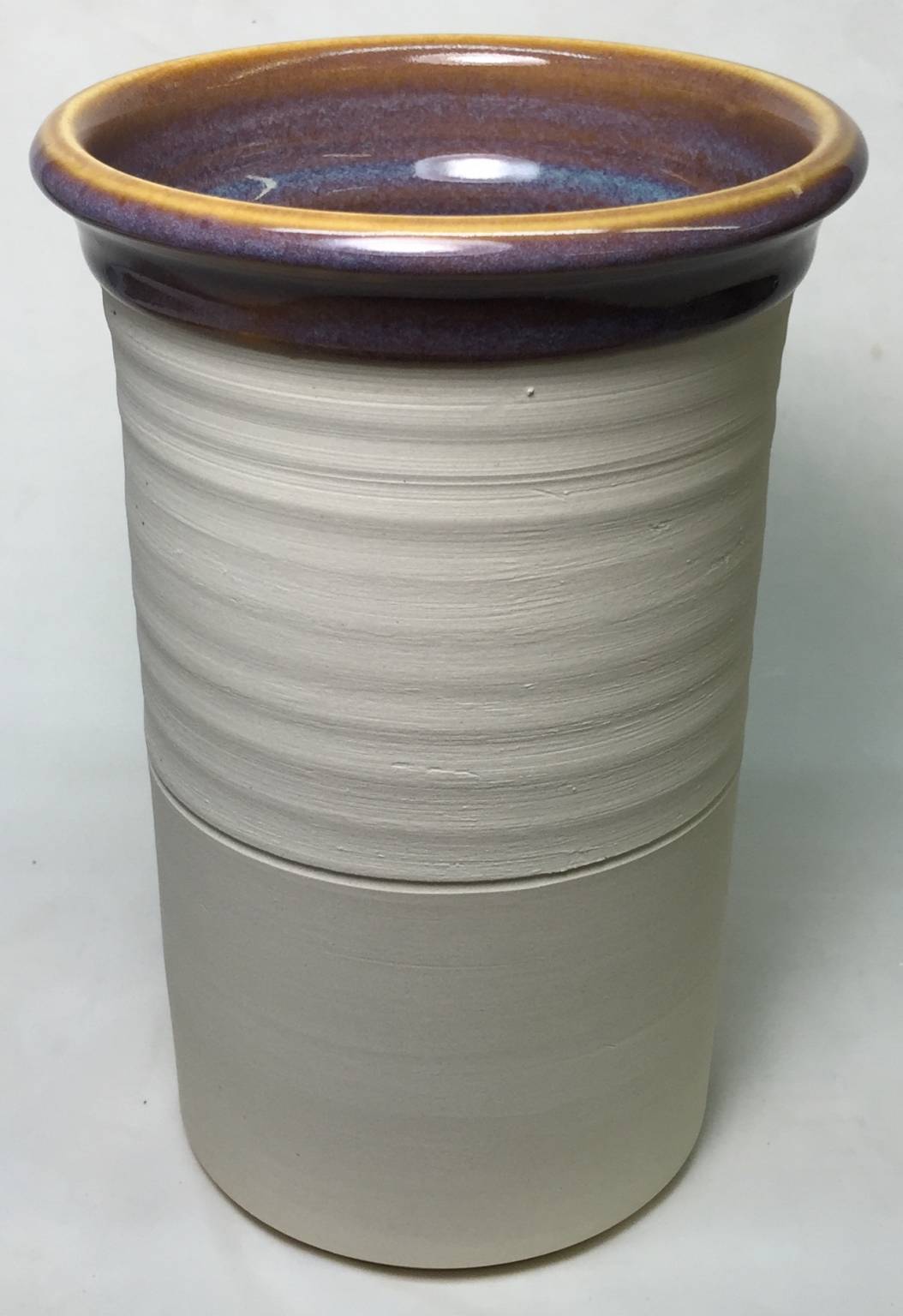M370
Description
Middle temperature, smooth, very plastic, white-firing, semi-vitreous, refined material body for functional stoneware. A casting version is also available.
Base Glaze and Slip Recipes: See the glazing section below for more information
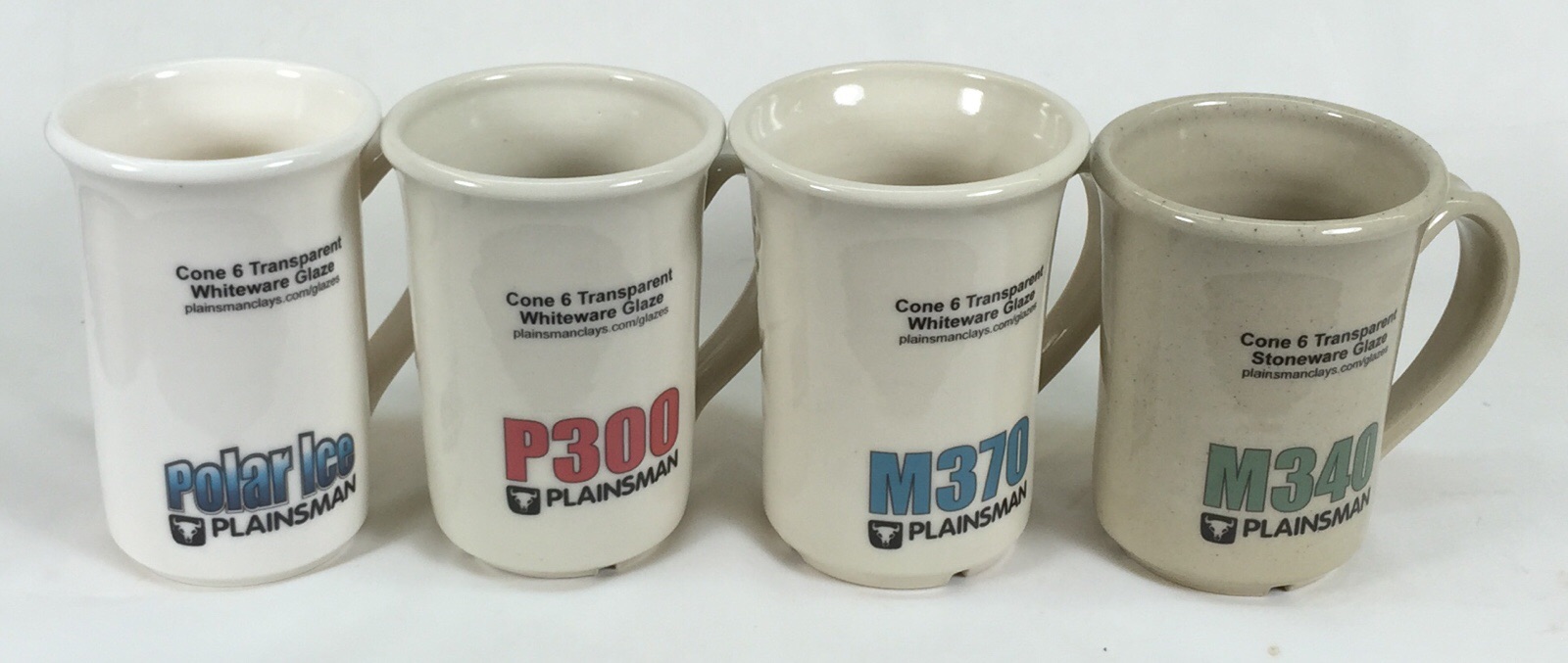
Plainsman Polar Ice, P300, M370 and M340 with G2926B Whiteware transparent glaze on the porcelain (G2916F Stoneware transparent on the M340).
M370 is our most popular white burning clay. M370 is semi-vitreous (it is somewhat porous at cone 5-7). Compared to similar competitor bodies, M370 is whiter (because it uses more kaolines and less ball clays). It is white enough that the powder is a good base for slips and engobes.
Substitutes For
B-Mix cone 6. M370 is much higher in kaolin and lower in ball clay than B-Mix, that is why it fires whiter. There is a plasticity-loss associated with this, M370 makes up for that with an addition of bentonite (given it a drying shrinkage of about 0.5% higher than B-Mix). Both bodies are highly plastic and fine-grained and require care in drying to avoid cracking. The best practice is to keep the water content of all parts of pieces as similar as possible throughout the drying process.
Process Properties
Since M370 is less vitreous than a zero-porosity porcelain it does not require as much feldspar in the recipe (enabling us to maximize the clay content for greater plasticity). If you need to attach elements (i.e. handles), use slip (not water) and apply as much pressure as possible during the joining process.
M370 generates less slip on throwing than competitor bodies that utilize more ball clay, you will find this makes throwing of large numbers of pieces less messy.
Drying: Porcelains do not dry as well as stonewares or bodies with particulates. You will get the best results if the clay is not too soft, ware is not too thick, contours are smooth, wall thicknesses are even, joins are few and done with thick slip, the degree-of-wetness in all parts of a piece is kept equal throughout all stages of drying. Large pieces are best made on plaster bats so the bottom can stiffen with the walls. The worst drying performance will occur with thick ware made from very soft clay, the use of non-absorbent bats, where vessel walls are thick at the bottom and thin at the lips or edges, walls are of uneven thickness with lots of joins or abrupt angles (giving cracks a place to start) and where drying is uneven (e.g. lips and edges are permitted to stiffen early on while lower sections remain soft). Large, flat plates are the most difficult shapes to dry, it may be necessary to stretch the time out to a month or more to achieve the even drying needed for success.
Firing
M370 is semi-vitreous at cone 6 (having about 1% porosity). Because we target this degree of density, it fires whiter and is tolerant of over-firing (having less tendency to bloat, stick to shelves, and glue lids to lips of ware). However, on second fix-up firings, it can bloat if fired above cone 6 (do not trust electronic controllers, verify with cones).
M370 is quite high in free quartz. This is an asset to achieving glaze fit but also requires caution in cooling the kiln through quartz inversion temperatures (e.g. 950-1100F) too quickly or dunting cracks can occur (especially large bowls and plates). If you glaze-fire a piece more than once be careful during heat-up through this temperature. Also, be aware that cooling too quickly through any stage may set up temperature gradients within pieces that can linger through inversion temperatures.
As with any body, bisque fire it to the highest practical temperature (high enough to burn out undesirables, but low enough to have the needed porosity for glazing). Cone 06 is a good starting point.
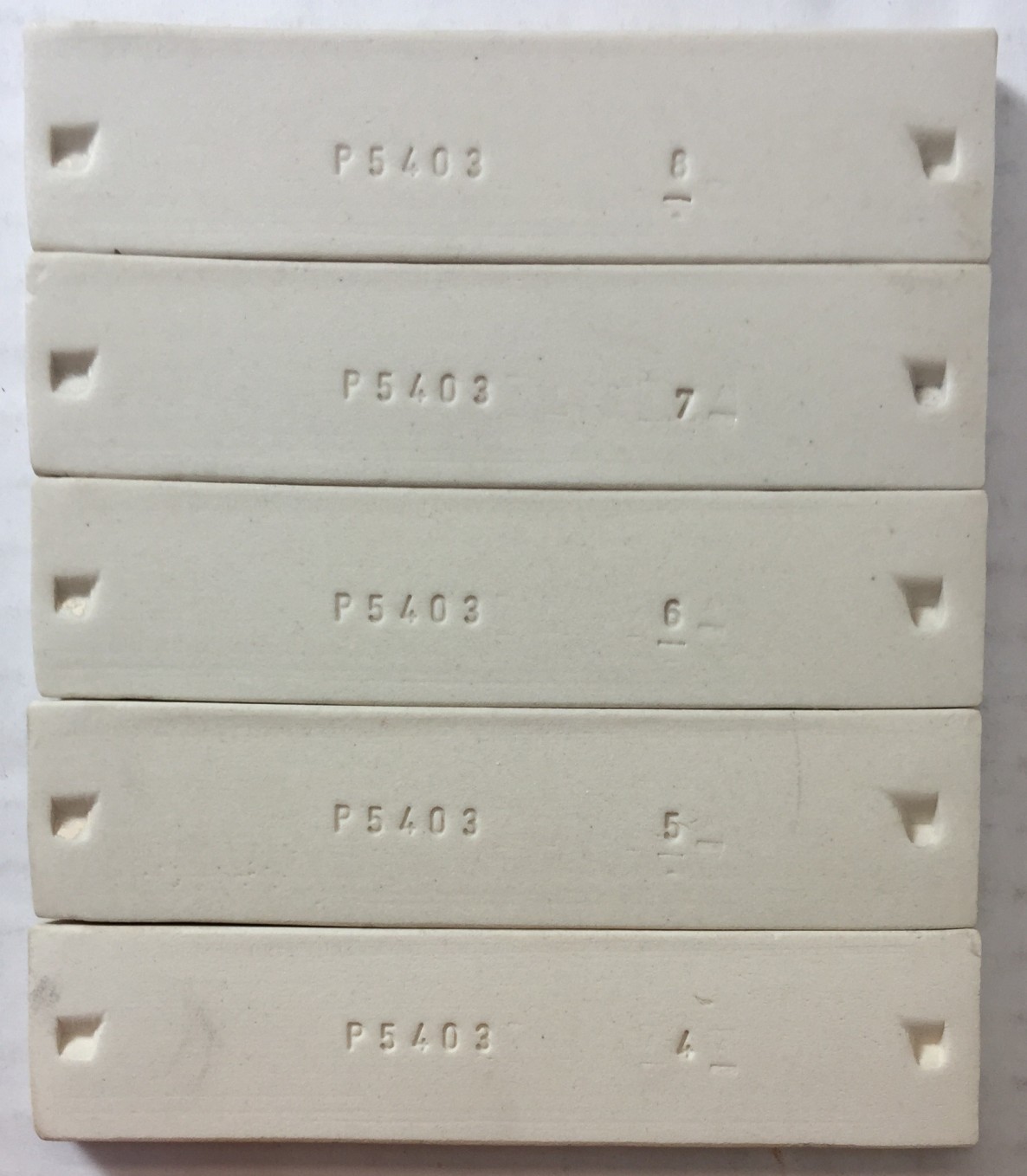
These fired bars show the progression of color from cone 4 (bottom) to cone 8. This body has plenty of margin for overfiring.
To get the best defect-free surface please consider using a drop-and-hold firing schedule, for example the PLC6DS schedule. If crystallization during cooling is not an issue, glazes will give optimum results if slow-cooled also (e.g. the C6DHSC schedule).
Glazing
Commercial brush-on glazes: They may or may not fit our clays (check for glaze fit using a BWIW test or similar). For brightly colored glazes (especially with layering) do a leach test (e.g. GLLE test). Consider using a transparent or white liner glaze for food surfaces.
DIY brushing glazes and dipping glazes: Begin with good transparent base recipes that do not craze, cutlery mark or leach on the body. Our G2926B glossy and G2934 matte can be purchased as powders or weighed out from their recipes (both can be adjusted for glaze fit). The two can be mixed to fine-tune matteness (e.g. 15:85 matte:gloss mix gives us a silky matte). Stains, opacifiers and variegators can be added to make almost any effect. Consider also making glazes based on GA6-A and GR6-A.
Thixotropy: If you want the best application properties for one-coat dipping, consider creating a thixotropic slurry. Thixotropic glazes are creamy because they have been thinned and then gelled by the addition of a flocculant.
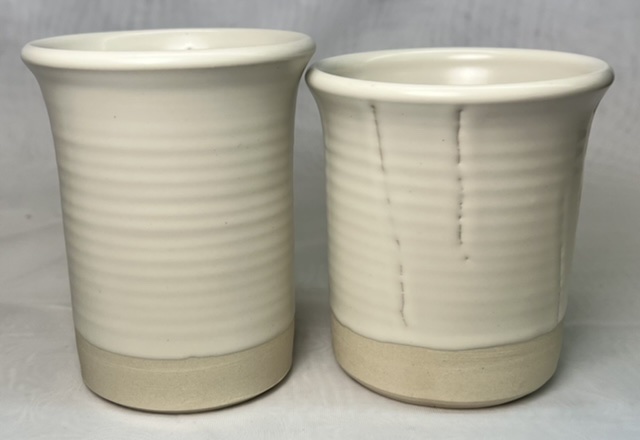
G2934 matte can crawl if applied too thick. These are M370 (normal thickness left, too thick right).
Slipcast ware: Slipcast bisque absorbs water from dipping glazes much more quickly than plastic-formed ware. Glazes used on the latter will go on too thick on the former. Solve the problem by bisque firing higher to reduce density, dipping quicker, raising the water content of the glaze or adding CMC gum to the slurry.
Casting Recipe
M370C has no added bentonite (unlike the regular clay which has 3%), thus its drying shrinkage is lower than M370. M370C utilizes the same #6 Tile kaolin as M370 (it is by far the most plastic kaolin available in North America). While that is great for throwing on the wheel, it is not ideal for casting (e.g. it means longer casting times). But it also offers the benefit of having plenty of leather hard strength and shrinkage so even thin walled pieces can pull themselves away from molds.
It is important to understand the principles of deflocculation, be able to measure specific gravity efficiently and have a good propeller mixer to make good casting slip. The recipe below is a guide, be ready to adjust the amount of Darvan as needed (or tolerate a higher specific gravity).
Suggested recipe (yields approx 4 litres):
| Ingredient | Grams |
| M370C powder | 5000 |
| Water | 2100 |
| Darvan #7 | 38 |
Mix the Darvan with the water first, then add the clay to that while the mixer is running. Hold back some of the Darvan for fine-tuning. Measure specific gravity by weighing, not a hydrometer. In our lab this recipe produces a slurry of 1.77 specific gravity after 1 hour of propellor mixing in our lab. Tune the amount of deflocculant such that the slurry gels after 30 minutes or so.
It is possible to make whiter, stronger, faster casting and translucent body if you are willing to weigh out your own batches, our L3778G recipe is a good documented starting point. You can also convert this to a red body by adding C-Red clay, see our L4558 recipe for more information.
Thermal Expansion
We do not supply thermal expansion values. If a chart is supplied here, please view it only as a way to compare one body with another. Please note that, although you may calculate the thermal expansion of a glaze, this cannot be done for clay bodies since they do not melt. The best way to fit glazes to clay bodies is by testing, evaluation, adjustment and retesting. For example, if a glaze crazes, adjust its recipe to bring the expansion down, fire a glazed piece and thermal stress it (using an IWCT test, 300F into ice-water). If it still crazes, repeat the process.
Physical Properties
Drying Shrinkage: 5.5-6.5% Water Content:21.7-22.7 Drying Factor: C120 LOI: 5.0-6.0%
Sieve Analysis (Tyler mesh):
48-65: 0.0-0.2% 65-100: 0.01-0.3 100-150: 0.1-0.4 150-200: 1.0-4.0 200-325: 8.0-11.0
Fired Shrinkage:
Cone 4: 5.5-6.5% Cone 5: 6.0-7.0 Cone 6: 6.5-7.5 Cone 7: 6.5-7.5
Fired Absorption:
Cone 4: 3.0-4.0% Cone 5: 1.5-2.5 Cone 6: 0.5-1.5 Cone 7: 0.2-0.8
Chemical Analysis
CaO 0.2 K2O 1.2 KNaO 0.1 MgO 0.2 Na2O 2.6 TiO2 0.7 Al2O3 22.4 P2O5 0.0 SiO2 65.6 Fe2O3 0.5 FeO 0.0 MnO 0.0 LOI 6.4%
Compared to Others
The decline of the ceramic industry in North America has impacted the price, availability and quality-for-ceramics of raw materials from which porcelains are made (especially ball clays and kaolins, which have seen increases in soluble salts, foreign particles and iron specks). In addition, we do not have filter-pressing, pre-mixing and stainless-steel pugging equipment (these would drastically increase prices). While you cannot make Wedgewood-quality ware it will be far whiter and cleaner than our stonewares. Notwithstanding that, be aware that transparent glazes carry a chance of isolated specks using our standard porcelains, it is better to use white and colored glazes on these. If you absolutely need a clean, white, translucent porcelain consider using our premium products, Polar Ice and P700 (they cost more but you get much more). We are also developing engobes for low, middle and high temperature ranges, using these you can apply a porcelain-like surface of almost any color at leather hard stage and completely hide the underlying stoneware. These engobes are so opaque that a white one can completely mask a black body underneath using only one coat. So, if you can master their use (there is lots of documentation here) many new design opportunities will offer themselves.
Gallery
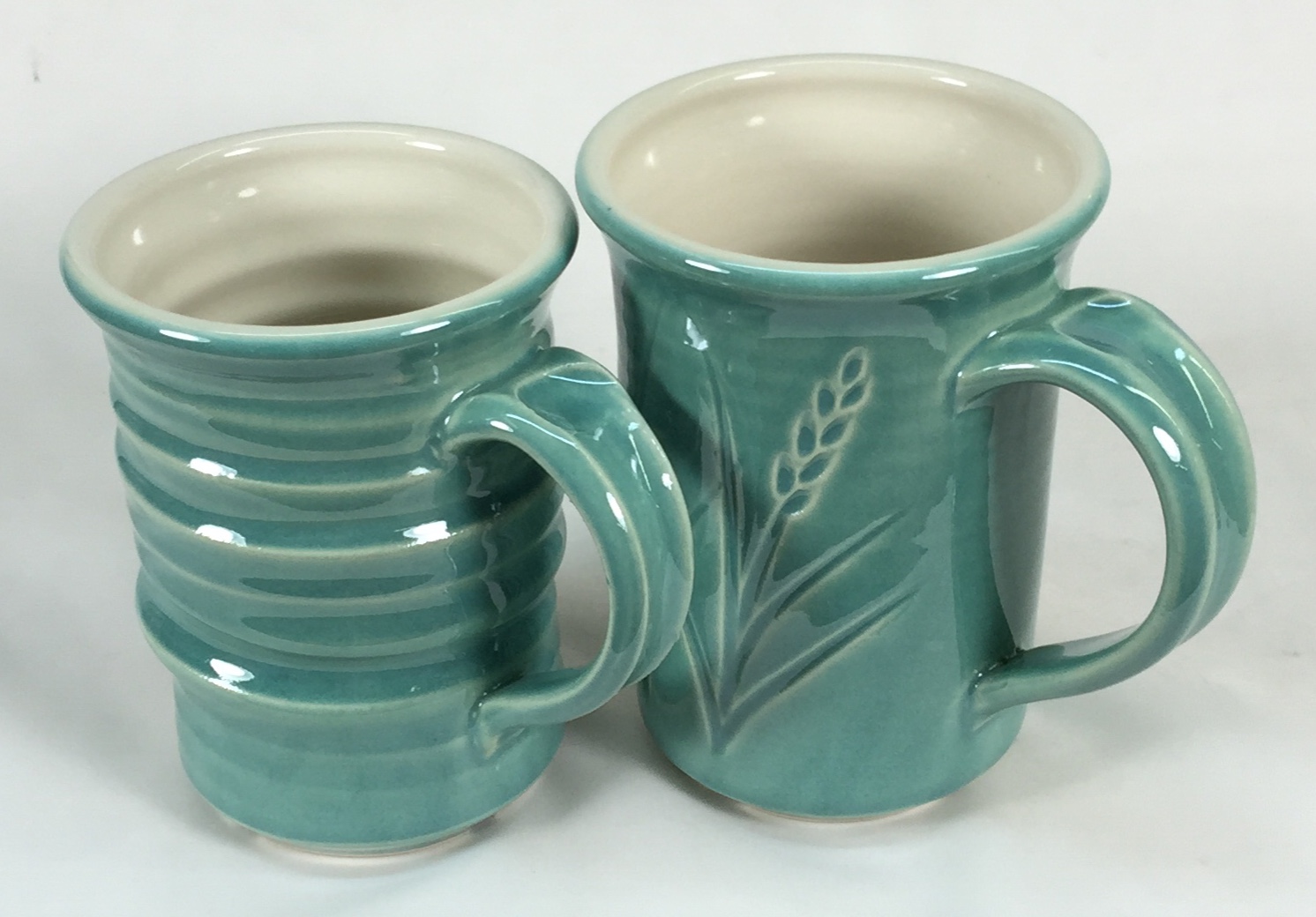
P300 and M370 Cone 6 mugs. By Tony Hansen. Outside glaze is G3806C plus copper oxide. The liner glaze is G2926B.
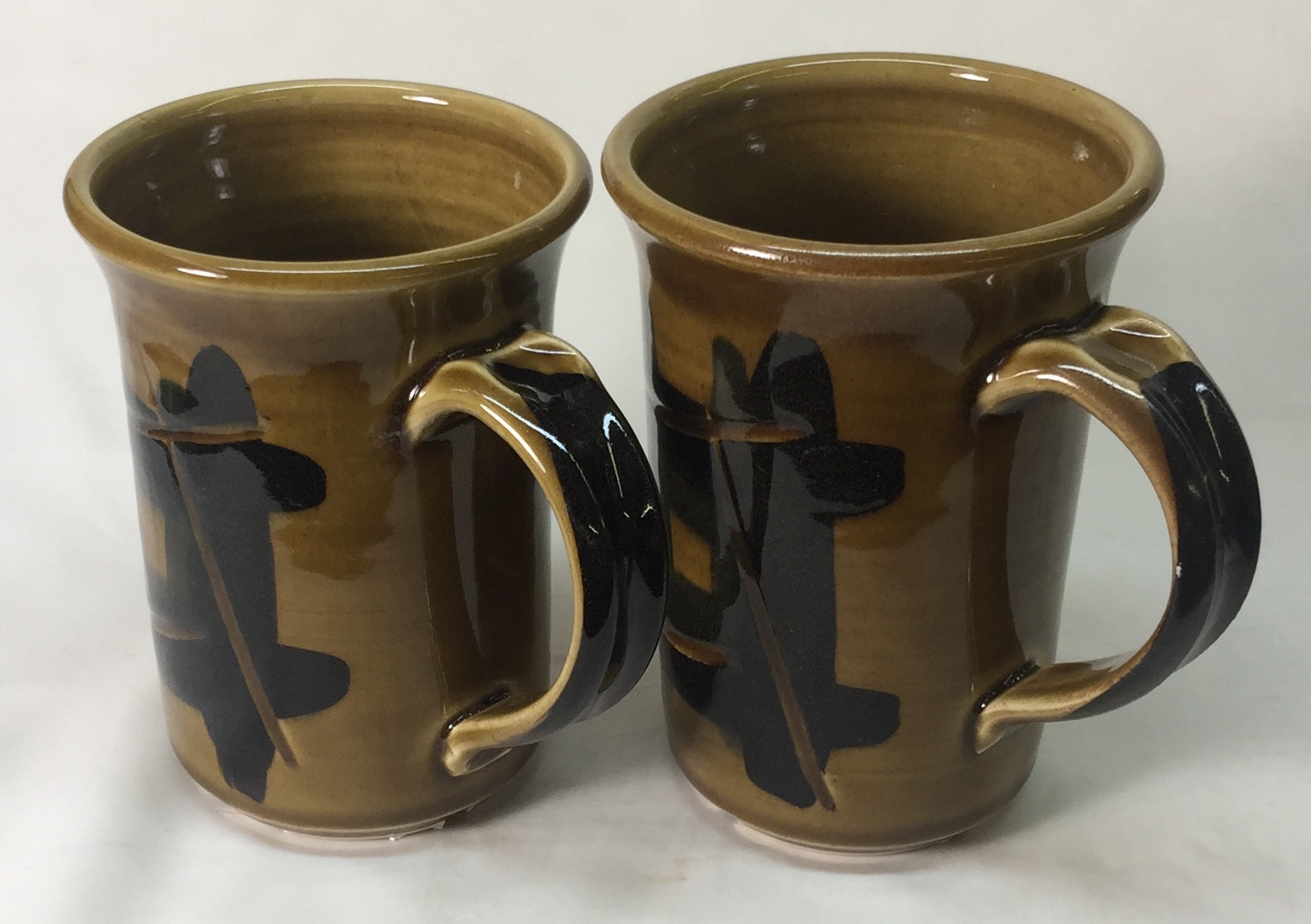
P300 and M370 mugs with GA6-A Alberta Slip at cone 6 (glaze uses Frit 3249 instead of Frit 3134). Firing soaked 30 minutes at 2100F on the way down and slow cooled 100F/hr down to 1400F.

Left: M370 mug fired to cone 10R. This is not recommended, this one has survived without bloating (but it could have bloated). Right: M370 mug fired to cone 8. Single fire. Quick drying (by heat gun). Obviously this type of treatment is not recommended, but it does demonstrate the margin for over-firing and drying properties.

